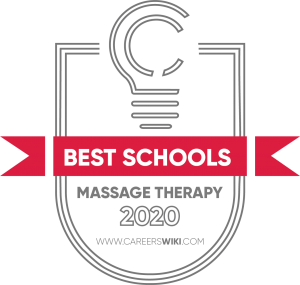…
There are dozens of massage therapy schools in Pennsylvania, from the large metropolitan areas of Pittsburgh and Philadelphia to smaller cities and towns. The number of these colleges continues to grow.
Students may choose either a private school or a regionally accredited institution. They earn degrees or certificates. Neither work experience nor on-the-job training is required, and there are no massage-therapy apprenticeships in Pennsylvania.
Graduates must pass a licensing exam to qualify for employment in the state.
You Might Also Like:

The State Board of Massage Therapy in Pennsylvania regulates and licenses postsecondary schools that offer programs in this field. The colleges must be authorized by either the board or the state Department of Education, or accredited by a national organization.
The board ensures that instructors are qualified and that the curricula properly prepare students. Officials oversee how examinations are conducted, establish licensure criteria, and maintain a registry of massage therapists in the state.
Pennsylvania’s regulations stipulate that those seeking to become massage therapists must satisfy three requirements: complete an educational program, pass an examination, and submit to a background check. There are a few additional mandates, which the board describes as “minor state-specific requirements.”
Practitioners must renew their licenses every two years, which entails earning 24 college credits of continuing education.
Authorized massage therapy programs at postsecondary schools in Pennsylvania involve at least 600 hours of coursework. A minimum of 175 hours must pertain to anatomy, physiology, kinesiology, and pathology. Another 250 hours or more are devoted to massage therapy assessment, theory, and practice. This includes safety, sanitation, and hygiene.
In addition, students must complete 25 hours in massage-related ethics, business, and law; and learn about HIV and related risks. They receive CPR training from the American Red Cross, American Heart Association, or another board-approved organization. Online training is not acceptable. Work experience and other hands-on experiences do not qualify for program credits.
Because massage therapists in Pennsylvania are considered mandatory reporters, they are expected to receive three hours of state-approved training in detecting and reporting child abuse from the state Department of Human Services.
Authorized curricula cover:
We selected the schools below based on the programs that they offer, accreditation, student population, graduation rate and reputation.
View our Ranking Methodology to learn more about how we rank schools.

Students can earn a diploma from this school’s massage therapy program in 10 months or sooner. The curriculum includes lecture, didactic, and clinical applications. Following completion of the coursework, students take part in an externship in a real-world environment that gives them hands-on training.
Among the classes are Medical Terminology, Pathology, Neuromuscular Therapy, Kinesiology and Joint Movement, Muscle Anatomy, Anatomy and Physiology, Sports Massage, Hydrotherapy and Spa Modalities, Deep Tissue Massage, Energy Bodywork, and Massage for Special Populations.
76%
396
Located in Erie, PA., GLIT provides a 10-month diploma program that offers “practical experience in a clinical setting.” Instruction covers Swedish Massage, Sports Massage, Shiatsu, Neuromuscular Techniques, and Massage for Special Needs Populations. Students also attain the business skills that independent practitioners need.
In addition to four classes in Massage Techniques and two in Massage Therapy Clinic, the coursework includes Career Success Strategies, Medical Terminology Essentials, Anatomy and Physiology, Myology, Pathology, and Massage Professional Practices.
Nine area employers (eight in Pennsylvania and one in New York) have recently hired GLIT graduates to work in salons, spas, hospitals, and a chiropractic clinic.
50%
624
The massage therapy diploma program at this school consists of five terms that require eight months to complete. Instruction takes place not only in classrooms, but also in computer, medical, and surgical labs.
The coursework focuses on Swedish Massage, Therapeutic Massage, Anatomy and Physiology, and Kinesiology. Other classes include Massage Therapy Theory; Somatic Psychology; Massage Pathology; Law, Business, and Ethics; Hydrotherapy and Aromatherapy; and Special Populations.
The school provides career assistance in resume writing, interviewing, and portfolio creation. There are workshops and externships. Alumni may return for career refresher courses that update them on industry trends and technologies.
44%
724
Located in Wyomissing, near Philadelphia, Berks educates students in massage theory and practice, as well as anatomy and business skills. Students also take classes in Swedish Massage, Massage Therapy for Special Populations, and Hydrotherapy and Aromatherapy.
The diploma program features externships at the conclusion of the coursework. The school also has its own clinical facilities, where students gain hands-on training alongside classmates and licensed massage therapists.
44%
793
The massage therapy program at this two-year school, in the Pennsylvania community of North East, awards professional certificates to its graduates. Among the classes are Swedish Massage, Eastern Massage and Bodywork, Massage for Special Populations, Pathology, Kinesiology, Anatomy and Physiology, and Business Law and Ethics.
In addition, students take part in three clinical rotations to obtain practical experience. Attendance at a seminar is another program requirement.
31%
1604
Massage therapy students here attend classes at the school’s Lake Region Center or Sunberry Center in northeast Pennsylvania. Graduates receive certificates upon their successful completion of 720 hours of study, which include 96 hours in clinical externships at The Lodge at Woodloch in Hawley, Pa.
The classes are Anatomy and Physiology, Pathology, Allied Modalities, Massage Theory, Massage Research, Kinesiology, Therapeutic and Medical Massage, Hydrotherapy and Sports Massage, Swedish Massage, and Business Ethics and Law.
Tuition, fees, and other expenses total less than $7,500. Financial aid is available.
28%
3338
Located in the community of the same name, Butler offers a certificate program. The required 32 credit hours require one year to finish.
Students take introductory, intermediate, and advanced classes in Massage Therapy, Theory, Techniques, and Practice. Additional courses are Human Anatomy and Physiology, Business Mathematics, Microcomputing, College Writing, Physical Fitness, Introduction to Yoga, Technical Writing, and Intermediate Algebra.
Approximately 80 percent of students receive scholarships to help pay for their tuition, and about three-quarters of them graduate debt-free. The school has academic and career advisors, as well as tutors. Continuing education is available for practicing massage therapists.
The Therapeutic Massage Practitioner program at this school awards certificates to its graduates. The faculty includes instructors who have worked in the profession. The school boasts a massage lab with privacy bays, massage tables and chairs, and spa products.
Among the classes, which take place in four quarters, are Kinesiology, Swedish Massage, Spa Modalities, Steps to Career Success, Medical Massage, Anatomy and Physiology, Pregnancy and Infant Massage, Deep Tissue Massage, Career Development, Clinical Massage, Business Ethics, and Diseases and Diagnostic Procedures. Students also perform an internship at an area spa, resort, or other facility.
21%
9921
Massage therapy students take classes and receive lab training on the Bethlehem Campus at NCACC, which bills itself as “one of Pennsylvania’s most affordable colleges.”
The one-year certificate program consists of 23 general-education credits plus 13 credits of massage therapy instruction. Students learn how to “develop therapeutic treatment plans, and apply appropriate massage techniques with a focus on whole-body wellness.”
The classes include College Success, Introduction to Computers, Human Anatomy and Physiology, Introduction to Communication, and Massage Therapy Procedures.
15%
16147
There are two options for massage therapy students here.
Earning an associate of science degree requires at least 60 credit hours. The coursework includes Medical Terminology, Human Biology, Massage Therapy Principles and Procedures, Psychology, Computer Information Technology, English Composition, Personal and Community Health and Wellness, Musculoskeletal Palpation Massage Therapy, Pathology, English Composition, Advanced Kinesiology, Massage Therapy Modalities, and Business Mathematics.
The certificate program entails at least 19 credit hours. Among the classes are Basic Emergency Management, First Aid and Athletic Injuries, Specialty Topics in Physical Therapy, Massage Therapy Principles and Procedures, Musculoskeletal Palpation Massage Therapy, and Introduction to Physical Therapy.
$20
$41,000
22%
The median annual salary for a massage therapist in Pennsylvania is nearly $41,000, about $1,000 more than the U.S. average. The highest earners receive nearly $68,000, compared with about $77,500 nationwide. The lowest salaries (less than $19,000) rank a bit below the national average.
The median hourly wage for massage therapists in Pennsylvania is almost $20. The top 10 percent get more than $32, while the bottom 10 percent earn about $9.
Pennsylvania is one of the 12 states with the most massage therapists. The U.S. Bureau of Labor Statistics expects employment in the field to rise from 3,700 positions in 2016 to 4,540 in 2026 (about 500 new opportunities each year). That would be 22 percent job growth, less than the projected national rate of 26 percent.
Sources: U.S. Bureau of Labor Statistics, CareerOneStop

LIMITED TIME DEAL